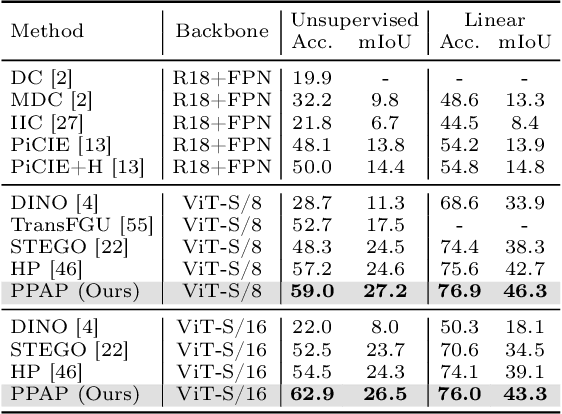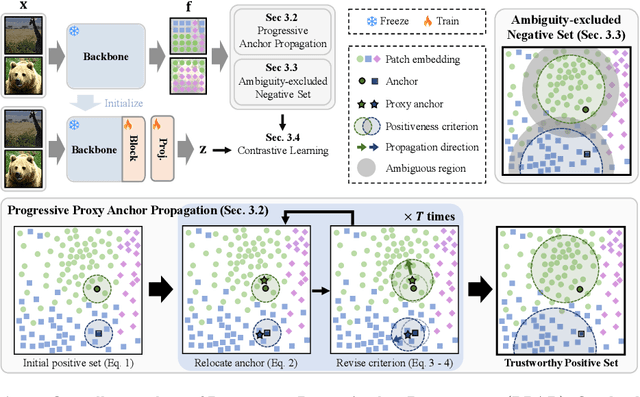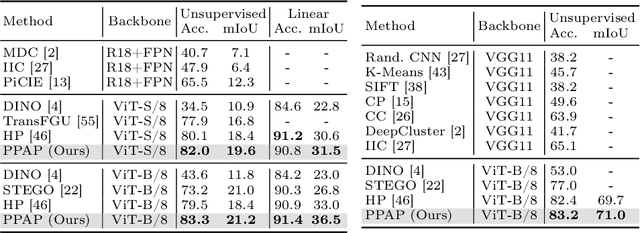Progressive Proxy Anchor Propagation for Unsupervised Semantic Segmentation
Paper and Code
Jul 17, 2024



The labor-intensive labeling for semantic segmentation has spurred the emergence of Unsupervised Semantic Segmentation. Recent studies utilize patch-wise contrastive learning based on features from image-level self-supervised pretrained models. However, relying solely on similarity-based supervision from image-level pretrained models often leads to unreliable guidance due to insufficient patch-level semantic representations. To address this, we propose a Progressive Proxy Anchor Propagation (PPAP) strategy. This method gradually identifies more trustworthy positives for each anchor by relocating its proxy to regions densely populated with semantically similar samples. Specifically, we initially establish a tight boundary to gather a few reliable positive samples around each anchor. Then, considering the distribution of positive samples, we relocate the proxy anchor towards areas with a higher concentration of positives and adjust the positiveness boundary based on the propagation degree of the proxy anchor. Moreover, to account for ambiguous regions where positive and negative samples may coexist near the positiveness boundary, we introduce an instance-wise ambiguous zone. Samples within these zones are excluded from the negative set, further enhancing the reliability of the negative set. Our state-of-the-art performances on various datasets validate the effectiveness of the proposed method for Unsupervised Semantic Segmentation.
 Add to Chrome
Add to Chrome Add to Firefox
Add to Firefox Add to Edge
Add to Edge